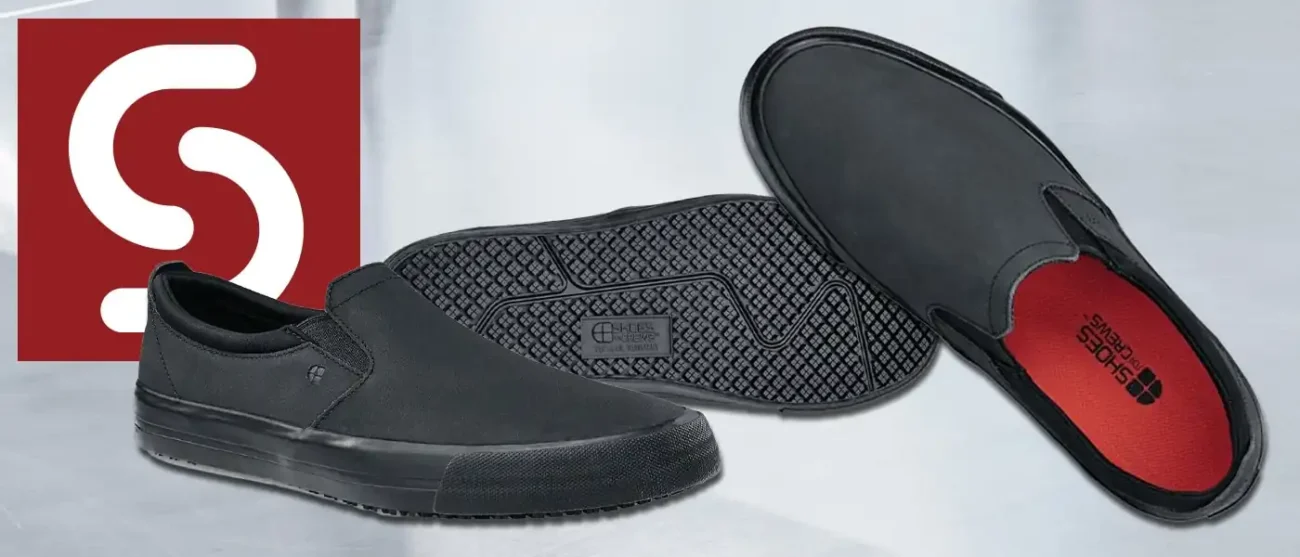Complete Safety Signs Checklist (England & Wales)
Ensuring your venue stays legally compliant. If your catering or hospitality venue is situated in England or Wales, your signage
Ensuring your venue stays legally compliant. If your catering or hospitality venue is situated in England or Wales, your signage
Available in a range of sizes, our brand new illuminated menu covers are all the rage. Our illuminated LED menu
Shop across our entire range of catering & hospitality products with up to 70% off until midnight Monday 1st December.
The leather menu cover can play a crucial role with customer’s first impressions. At Smart Hospitality Supplies, we have made
In the fast-paced world of culinary arts, where every moment counts, the importance of functional, comfortable, and stylish footwear often goes unnoticed. However, a chef’s choice of shoes is as vital to their performance as the sharpest knife in their toolkit. The advent of slip-on shoes brings together the trifecta of convenience, comfort, and style, satisfying the needs of those who devote long hours to crafting culinary masterpieces. In this blog, we will explore why slip-on shoes have embodied effortless elegance in the culinary domain.

Slip-on shoes are those without laces and typically feature a sleek design. The most common style in the UK is the loafer, slipper, or penny loafer, which closely resembles a moccasin. The Wildsmith Loafer was among the pioneering designs of this type, introduced in London by Wildsmith Shoes. While initially considered casual footwear, slip-ons have gained such widespread popularity that people now wear them with business suits worldwide. Another variety of slip-on shoes is the Aurlandskoen (Aurland Shoe), originating in Norway in the early 1900s.
During gruelling shifts in a kitchen, comfort and safety take precedence. Traditional kitchen footwear has historically prioritised safety but not always comfort or ease of wear. Chefs who endure foot discomfort or grapple with flat feet understand the challenge of finding the right equilibrium between comfort, style, and safety.
Enter slip-on chef footwear. These have all the essential attributes for a day (or night) in a bustling kitchen. Thanks to innovative designs from various brands, they offer slip-resistant soles, a snug yet comfortable fit, and are often crafted from robust materials such as leather or polyurethane. Slip-ons provide an extraordinary level of comfort, making them the perfect choice for those extended shifts where foot discomfort is a constant concern.
Concerning slip-on chef footwear, leather shoes frequently take the lead. Leather provides durability, breathability, and style for long shifts. Nevertheless, polyurethane alternatives also deliver durability and are often available at a more budget-friendly price point. Yet, the choice boils down to personal preference and the specific requirements of your profession.
The finest slip-on chef kitchen shoes are equipped with additional padding to offer optimal comfort and safety. Supportive arches for flat foot pain, lightweight materials for unrestricted movement, slip-resistant soles and protective toe caps are just a few examples. Whether you are part of a catering team or working in a Michelin-starred establishment, these shoes are sure to meet the industry’s standards for being extremely comfortable.
The assortment of slip-on chef footwear caters to every style, from clogs to loafers. Brands like Birkenstock and Crocs present functional and fashionable chef shoe collections. There is a pair suited to every chef, irrespective of their taste or the demands of their professional setting.
Prices fluctuate depending on the brand, material, and features, so conducting some research before purchasing is prudent. In a profession where you are continually on your feet and surrounded by liquids, a quality pair of shoes is not merely a purchase but an investment in your comfort and safety.
The ascent of slip-on chef footwear goes beyond being a mere fashion statement; it represents a practical and innovative feature now regarded as a standard piece of equipment. These chef shoes balance quality, style, and functionality, making them the preferred footwear choice for chefs everywhere. With ongoing advancements in footwear technology and design, the humble chef’s shoe is no longer an afterthought but a staple contributing to culinary excellence.



A Company Registered in England & Wales Company Registration Number: GB05069286 VAT Registration Number: GB867112521 Smart Hospitality Supplies is a trading division of The Smart Marketing & Media Group Limited
